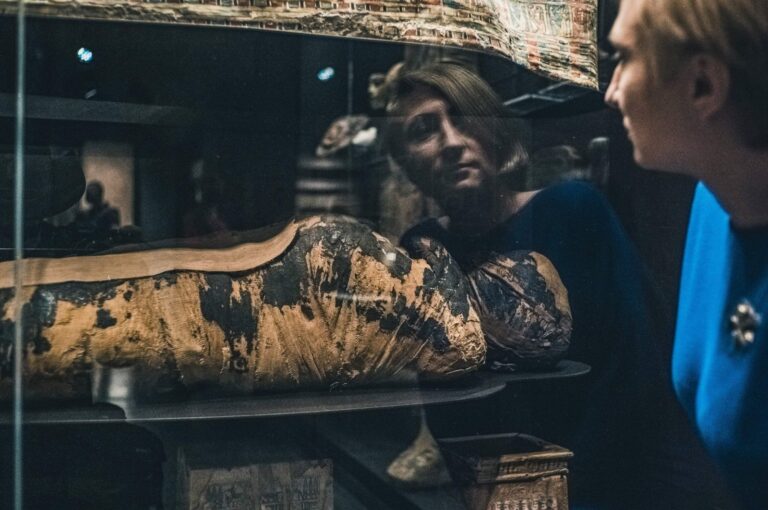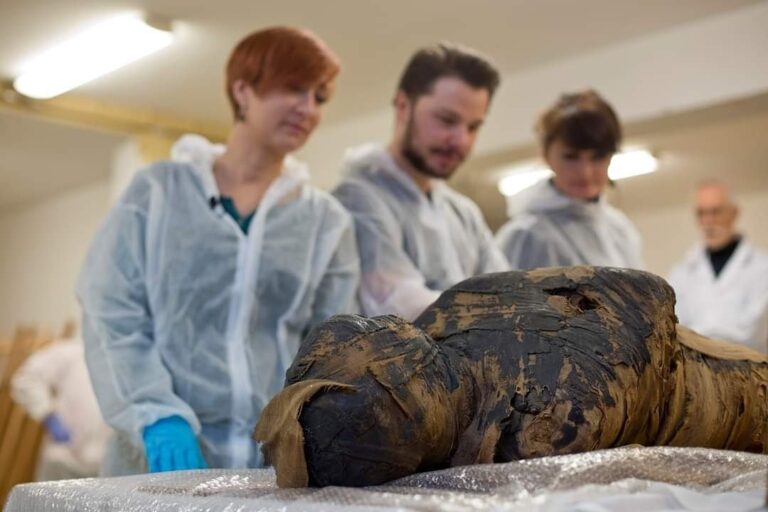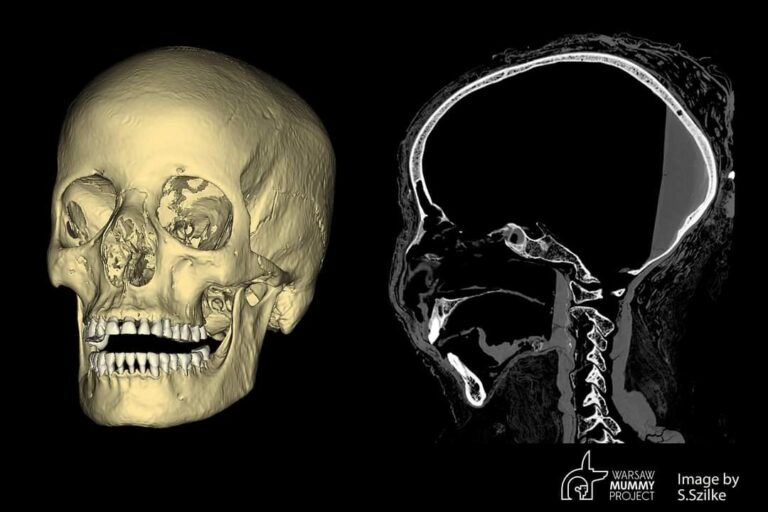“Mysterious Lady,” the pregnant mother, might have passed away from cancer.

Anew study conducted in Poland has revealed that the world’s first pregnant ancient Egyptian mummy, dubbed the “Mysterious Lady,” possibly died from a rare form of cancer. Researchers with the Warsaw Mummy Project claim that skeleton defects that they noticed in the mummy’s skull may indicate tumor changes in the bones.
Studies so far have shown that the “Mysterious Lady” came from the elite of the Theban community in the royal tombs of Thebes in Upper Egypt. Discovered in the early 1800s, the mummy dates back to the first century B.C., when Cleopatra was queen and the ancient Egyptian city of Thebes was an important trading post.

The mummified woman at The National Museum in Warsaw. (Photo via Warsaw Mummy Project)
The mummy was taken to the Polish capital Warsaw in 1826 around the time some of the most important discoveries were made in the Egyptian Valley of the Kings. Since 1917, the mummy, belonging to the University of Warsaw, is loaned to the National Museum in Warsaw. It is displayed together with the sarcophagus at the permanent exhibition of the Ancient Art Gallery.
An examination using tomographic imaging revealed last year that the woman was between the ages of 20 and 30 when she died and was in the 26th-30th weeks of her pregnancy. The mummy had been carefully wrapped in fabrics and buried with many amulets for her comfort in the afterlife with her child.
A more recent study on the mummy based on computed tomography indicated that she suffered from nasopharyngeal cancer, a rare type affecting the part of the throat that connects the back of the nose to the back of the mouth.

A computed tomography of the mummified woman. (Photo via Warsaw Mummy Project)
The researchers discovered unusual changes in the nasopharyngeal bones of the Mysterious Lady, which are not typical of the mummification process. They evaluate them as possible tumor changes in the bones. Besides, the young age of the deceased and the lack of another cause of death supports the idea of an oncological problem as mortis causa.

The scientists of the Warsaw Mummy Project said they are currently planning to collect tissue samples from the pregnant mummy and compare them with cancerous tissue samples from other Egyptian mummies.
By revealing the “molecular signature” of cancer with their studies on mummies, the researchers also hope to expand the knowledge about cancer evolution and contribute to the development of modern medicine. It’s also thought that more research could identify the cause of the nasopharynx, specifically whether it’s related to viral infection or genetics, in the Mysterious Lady.